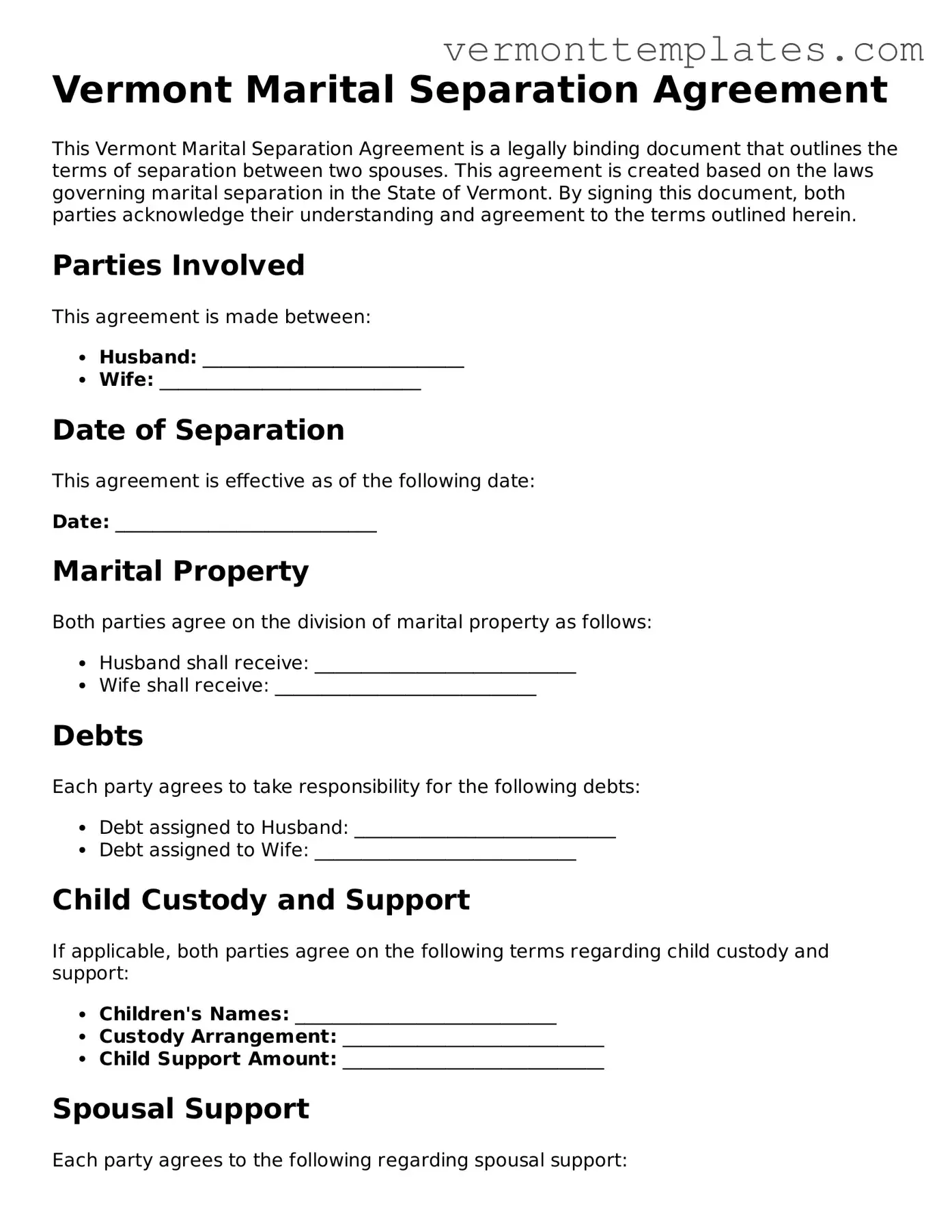Vermont Marital Separation Agreement
This Vermont Marital Separation Agreement is a legally binding document that outlines the terms of separation between two spouses. This agreement is created based on the laws governing marital separation in the State of Vermont. By signing this document, both parties acknowledge their understanding and agreement to the terms outlined herein.
Parties Involved
This agreement is made between:
- Husband: ____________________________
- Wife: ____________________________
Date of Separation
This agreement is effective as of the following date:
Date: ____________________________
Marital Property
Both parties agree on the division of marital property as follows:
- Husband shall receive: ____________________________
- Wife shall receive: ____________________________
Debts
Each party agrees to take responsibility for the following debts:
- Debt assigned to Husband: ____________________________
- Debt assigned to Wife: ____________________________
Child Custody and Support
If applicable, both parties agree on the following terms regarding child custody and support:
- Children's Names: ____________________________
- Custody Arrangement: ____________________________
- Child Support Amount: ____________________________
Spousal Support
Each party agrees to the following regarding spousal support:
- Support Amount: ____________________________
- Duration: ____________________________
Miscellaneous Provisions
Both parties agree as follows:
- This agreement constitutes the entire understanding between the parties.
- This agreement may be modified only in writing and signed by both parties.
Signatures
By signing below, both parties acknowledge their understanding and voluntarily agree to the terms of this Marital Separation Agreement.
Husband's Signature: ____________________________
Date: ____________________________
Wife's Signature: ____________________________
Date: ____________________________
This document is executed in accordance with the laws of the State of Vermont.
